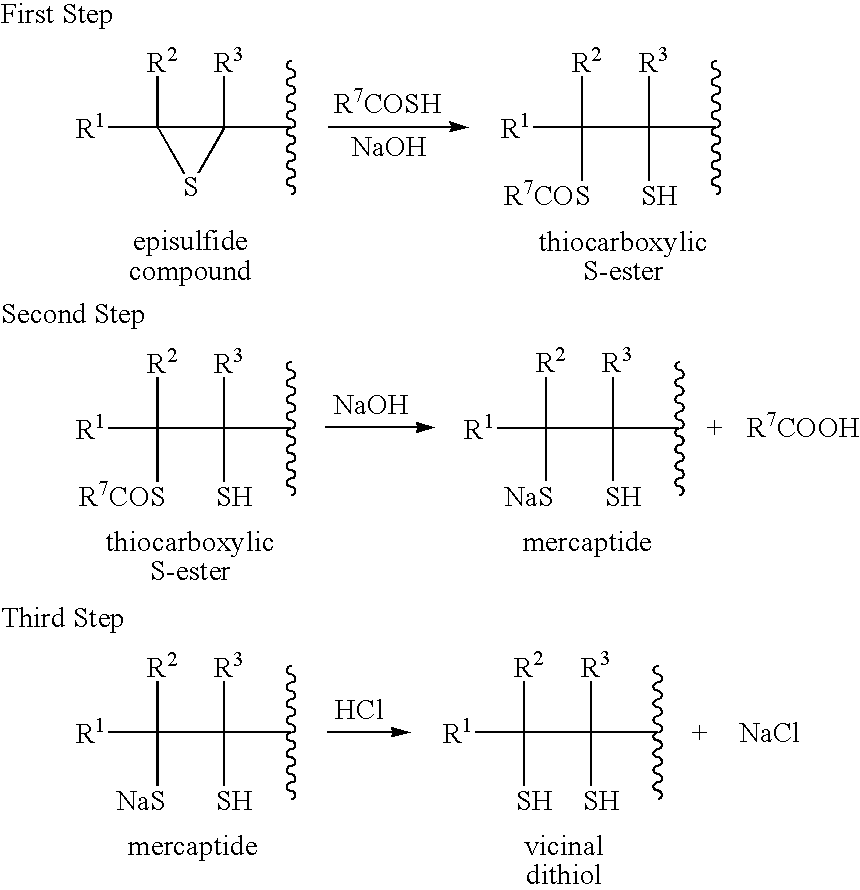Method for producing vicinal dithiol
a technology of vicinal dithiol and vicinal dithiol, which is applied in the field of producing vicinal dithiol, can solve the problems of low yield of vicinal dithiol and only giving it in low yield, so as to prolong reaction time, reduce reaction temperature, and reduce the effect of reaction tim
- Summary
- Abstract
- Description
- Claims
- Application Information
AI Technical Summary
Benefits of technology
Problems solved by technology
Method used
Image
Examples
example 1
First Step
[0079] Into a flask equipped with a stirrer, a thermometer, a condenser, a dropping funnel and a nitrogen inlet, were charged 180 g of methanol, 0.290 g (6.74 mmol) of solid sodium hydroxide (content: 93%) and 61.5 g (808 mmol) of thioacetic acid. By blowing nitrogen gas into the flask, the contents were stirred to prepare a uniform solution and the oxygen concentration of the system was simultaneously reduced to 1% by volume or less. After raising the temperature of the solution to 50° C., 60.0 g (336 mmol) of bis(β-epithiopropyl) sulfide was added dropwise while maintaining the temperature at 50° C. After the dropwise addition, the reaction was allowed to further proceed at 50° C. for 4 h.
Second Step
[0080] After the reaction of the first step, the temperature of the solution was lowered to 10° C. Then, 84.1 g (841 mmol) of a 40% aqueous solution of sodium hydroxide was added dropwise while maintaining the temperature at 10° C. After the dropwise addition, the reacti...
example 2
[0082] The reactions were carried out in the same manner as in Example 1 except for changing sodium hydroxide (6.74 mmol) used in the first step to sodium methoxide (6.74 mmol). The results are shown in Table 1.
example 3
[0083] The reactions were carried out in the same manner as in Example 1 except for changing the reaction temperatures of the second step and the third step from 10° C. to 30° C. The results are shown in Table 1.
PUM
| Property | Measurement | Unit |
|---|---|---|
| temperature | aaaaa | aaaaa |
| temperature | aaaaa | aaaaa |
| temperature | aaaaa | aaaaa |
Abstract
Description
Claims
Application Information
 Login to View More
Login to View More - R&D
- Intellectual Property
- Life Sciences
- Materials
- Tech Scout
- Unparalleled Data Quality
- Higher Quality Content
- 60% Fewer Hallucinations
Browse by: Latest US Patents, China's latest patents, Technical Efficacy Thesaurus, Application Domain, Technology Topic, Popular Technical Reports.
© 2025 PatSnap. All rights reserved.Legal|Privacy policy|Modern Slavery Act Transparency Statement|Sitemap|About US| Contact US: help@patsnap.com



